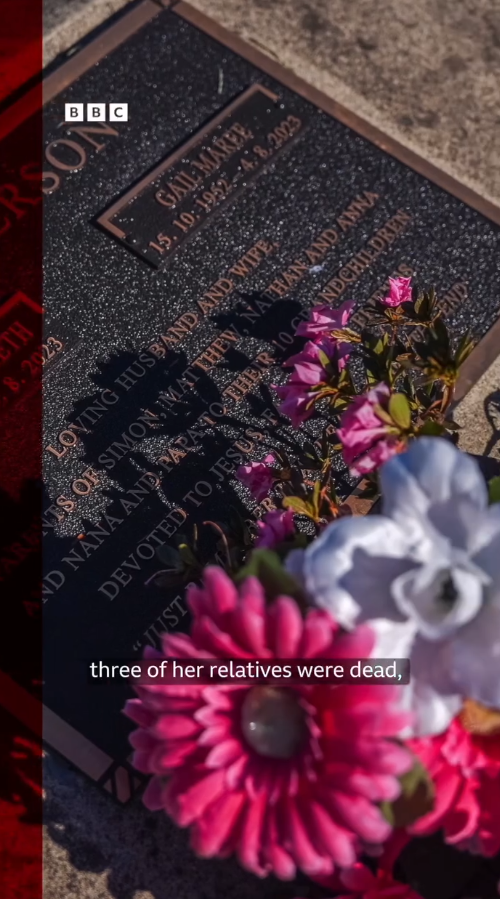
It’s a true crime tale that seems too bizarre to be real — a story involving a homemade beef Wellington, an alleged poison plot, and a woman whose past behavior includes binge-eating birthday cake straight from the bin. The trial of Australia’s so-called “toxic mushroom cook,” Erin Patterson, has captured public attention like few other cases in recent memory, blending tragedy, culinary curiosity, and a tangle of unanswered questions.
At the heart of it all is the quiet town of Leongatha in Victoria’s Gippsland region, where, in July 2023, a family lunch ended in three sudden and shocking deaths. Patterson, a 49-year-old home cook and mother of two, invited her estranged in-laws — Don and Gail Patterson — as well as Gail’s sister, Heather Wilkinson, and her husband, Ian, for a weekend meal. On the menu: beef Wellington, made from scratch in Patterson’s kitchen.
Within days, three of the guests were dead. The only survivor, Ian Wilkinson, a local pastor, spent weeks in hospital in critical condition before making a slow recovery. The cause? Suspected death cap mushrooms — Amanita phalloides — one of the most poisonous fungi in the world.
As headlines exploded across Australia, Patterson insisted the whole thing was a tragic mistake. In an emotional police statement, she claimed she had bought a mix of mushrooms from an Asian grocery store and had no idea of the danger. “I loved them,” she said of her in-laws. “I didn’t do anything wrong.”
But investigators remained skeptical.

Death cap mushrooms are notoriously lethal, and not easily confused with other varieties. They’re also not typically found in store-bought packets. The forensic investigation soon grew more complicated as police searched Patterson’s home, seized kitchen appliances, and combed through online activity and handwritten notes.
What they found only deepened the mystery.
A strange history begins to emerge
Court documents have revealed a pattern of unusual behavior in the months and years leading up to the fatal lunch. One report alleges that Patterson once binge-ate an entire birthday cake from the rubbish bin, leaving behind a note saying she was “sorry for being weak.” Another described her as a “compulsive liar” and “obsessed with control.” Friends and former acquaintances described her as intelligent and capable, but sometimes secretive and emotionally erratic.
Prosecutors allege that the mushroom-laced lunch was not a coincidence, but a deliberate act. They’ve charged her with three counts of murder and five counts of attempted murder, citing previous incidents where people close to her fell ill under suspicious circumstances.
Patterson has pleaded not guilty to all charges.

Her defense team maintains that she has been unfairly portrayed in the media as a “black widow” figure, when in fact she’s a grieving woman who made an honest — albeit fatal — culinary mistake. “This is a woman who has lost loved ones,” her lawyer said. “She didn’t intend to harm anyone.”
But as the trial continues, the case has gripped a nation — and the world — with its heady mix of food, family drama, and fatal suspicion.
Fungi fascination and media frenzy
The case has sparked a surge of interest in the deadly world of wild mushrooms. Australian foraging groups have reported increased questions and requests for identification help. Public health warnings about the dangers of picking mushrooms in the wild have flooded news feeds. Even chefs have weighed in, discussing the difficulty of preparing wild fungi safely and the razor-thin margin for error.

Some have pointed out how the cultural fascination with true crime, especially involving women, plays a major role in the attention the case has received. The image of a suburban mother cooking a deadly meal is as unsettling as it is cinematic. Podcasts and online sleuth communities have picked apart every detail — from the type of mushrooms allegedly used to Patterson’s body language during her first media appearance.
Others see it as a cautionary tale, not just about food safety, but about trust, family, and the undercurrents that can lie beneath seemingly ordinary relationships.
The trial continues
As evidence is presented in court, the case remains murky. Experts are expected to testify on the biochemistry of mushroom toxins, their effects on the human liver, and whether the symptoms exhibited by the victims match those typically caused by death cap poisoning. Medical records, text messages, and witness statements will all come under scrutiny.
There’s also the matter of motive. Prosecutors claim that tensions with her estranged husband Simon — the son of two of the deceased — played a role. The couple had been embroiled in a bitter separation and custody battle. However, Simon was invited to the lunch and didn’t attend, reportedly backing out at the last minute. He has not been implicated in any wrongdoing.
For now, the Australian public watches with morbid curiosity and a sense of unease. In a country where foraging is common in some communities and family gatherings are sacred, this case hits close to home. It forces people to ask unsettling questions: How well do we know those closest to us? How much danger can hide behind something as seemingly innocent as a shared meal?
Whether Patterson is found guilty or not, one thing is clear — this trial, with its blend of domestic normalcy and fatal intrigue, will be remembered for years to come.
Because from binge-eating cake to cooking deadly fungi, this is no ordinary courtroom drama. It’s a case where every bite tells a story — and the truth is still unfolding.



